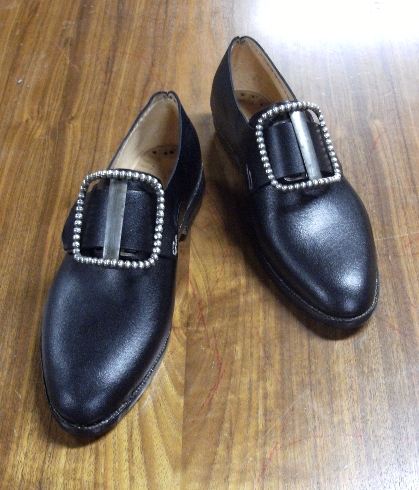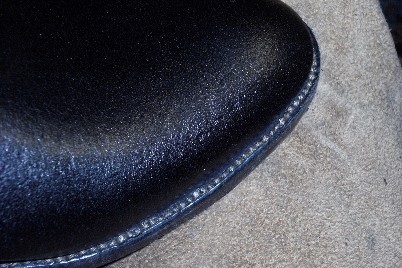Yes, another 1600s shoe, but hey – why quit when you have a good thing going? =) I do try and do new things with every piece, and this one was no exception. In this case, when I visited the Museum of London, I was fortunate enough to be able to look at many of the stored leather pieces that they had in the cabinets. I’m sure I mentioned it in a previous post – anyhow, one of the things that impressed me was the level of detail in so many of the shoes.
In some cases, there were lines of fine tunnel stitching along the surface and opening of the shoe. In fact, this was even visible on many shoes from the wreck of the Mary Rose in 1545, and those guys were sailors! A point of note is that a far majority of shoes had some kind of reinforcement along the opening, either a top band or some kind of stitching like this.

How about some background and construction shots:
Continue reading 1600s Heel with Edge Decoration →
I had meant to write this up into an official lesson, but to tell the truth, I think I can do better on the next pair! I learned an incredible amount on these shoes, and although I do plan to make another pair at some point soon, I think that these are of sufficient quality to present here. In truth, they knock the socks off of my Lesson 5, and I’m far more pleased with them. The upper leather is black waxed calf from Dickens Brothers, one of the oldest leather merchants in the UK. Further, it is precisely what the shoemakers in Colonial Williamsburg use. The insole, rand, and outsole leather is from Joh. Rendenbach. Both leathers were an absolute pleasure to work with.
The buckles themselves are actual antique 18th century silver buckles. These buckles are neat in that they are “clasp” buckles, where a small button is pressed and the actual strap attachment hinges out of the buckle proper. Then, once the shoe is buckled, the silver portion is clicked back in to place. Quite neat!
Dedicated to the Research and Construction of Chopines, Pantoufles, Zoccoli, Shoes, Boots,and Other Raised and High Heels.


